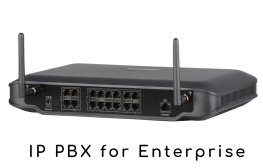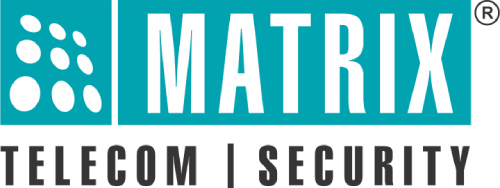
If you are in charge of the ICT ( Information & Communication Technology) requirements for an enterprise large enough to house multiple departments and functioning across multiple locations, this is for You!
In recent times, emphasis over the importance of enterprise communication system and it’s impact are being made. Yet too many organizations it’s still the same intercom system that lets you do the internal calling and offers some call management features. There is more to this, we shall see six challenges that an enterprise can face by not having the right communication set-up & the risks it involved in lose selection of the right IP PBX.
Any large enterprise generally faces these issues in routine which leads to poor productivity, cost overheads, the contribution of communication in decision making. Let’s explore in detail each of these points.
Poor Customer Assistance
There is no right time for customers to seek assistance or register an inquiry. Having said that a 24 x 7 functional customer assistance center is not always an option for businesses who have just started to grow. Investing in human resource and operational costs to house around the clock customer assistance unit is an option not available to every business. However, this can’t be a reason to lose the most significant aspect of any business “ a customer lead” or an unanswered, unattended customer.
For organizations that have a dedicated customer assistance team generally faces heavy call flow. The issue here is to maintain a low MPI ( Minute per incident) this leads to a situation where the executive is more worried about time spend over a call instead of quality of assistance offered.
Are there any solutions to this? Yes, we have often under-utilizing technology features at our disposal yet expect more outta it.
The Solution:
This is where having an IP PBX phone system can enhance the professional image of an organization.
An IP PBX for enterprise generally comes with the set of features like Computer Telephony Interface (CTI), Voice mail functionality, Auto-attendant, Interactive Voice Response System (IVRS), Automated SMS and using these features can significantly improve client assistance services.
Utilizing CTI enables telephone system to integrate with various technologies be it applications or software. Software technology like CRM is one of the widely used tools to integrate with the telephone system. Agents assisting customers on receiving call gets a pop-up notification on their laptops or PCs with details of the clients fetched from the CRM database. Now, agents have callers information beforehand, with the information agents now know what is that the caller is looking for, what are their concerns, call priority can be decided beforehand. It can provide interactive voice response (IVR) to internal callers, allowing a self-service.
For nonworking hours, Auto-attendant can manage the calls as per the configurations made.
Whether it is material order complaint or inquiry call, telephony system plays an important role in handling customers effectively. Knowing names before they speak, preferences before they express and self-service experience enhances professional image among customers
Basically, a customer never stays unanswered or unheard.
Head Office to Branch Office communication
Traditionally each branch has its own setup of the communication system, vendors and IT staff. Inefficient management of multiple systems and duplication of resources costs very high to the large businesses as a whole.
Major issues faced are :
Difficulty to manage stand-alone telephony infrastructure.
Adding users, phones, allocating features and class of services consumes more time.
The Solution:
IP PBX for Enterprise, bypass PSTN toll and securely integrate branch offices over IP telephony using Multi-Site Connectivity Application.
Businesses with multiple branches or offices located at different locations don’t necessarily need to invest in maintaining separate trunk lines for employees to make outgoing calls or IT resources to manage the same. IP PBX, telephone switch based on IP protocol is manageable from a central location from a web-based interface. Trunk lines in a centrally installed PBX can be utilized by employees at a different location, making it easy to own a communication system.
Over-all Communication Expense
Large Organizations pay huge telephony bills when calling to multiple departments, clients, vendors, and other internal and external organizational units over landlines, mobile or international numbers for any kind of services, grievance and sales promotions
The Solution:
The single most significant benefit of an IP PBX is the ability to facilitate SIP calling. International calling cost over SIP-based trunks can reduce communication cost significantly.
An IP PBX having the facility to interface multiple networks trunks like Analog(CO), GSM, ISDN PRI, and SIP give flexibility to businesses to use the trunk that suits them the best, all this keeping benefits of IP-to-IP connectivity of multiple locations unaltered.
Communication with Mobile Employees
Some employees spend more time roaming inside the premises, than being at a desk. Field executives and professional staff are on the road a lot. Calling to them frequently on their mobile numbers increases telephony bills significantly.
The Solution:
Using wireless extensions, they can make and receive calls similar to desk phones on-the-move.
Easily connect with field employees using Mobile Softphone application.
Mobile softphones makes reaching field workers and traveling employees a breeze
Use the latest VoIP technology to get rid of cellular, CUG and roaming call charges
Mobile Softphone Available for popular Android/iPhone
Emergency Communication
During an emergency situation, the desirable situation is when you get to reach to everyone at once to inform the action plan or safety measures. Enterprises in today’s time strive to create a safe and secure workplace.
The Solution
An IP PBX connects to SIP-based speakers that can be used to make public announcements with a single click, assuring the safety of the employees and the premise. An emergency can be better handled this way. Moreover, security instructions can be broadcasted over the selected department or group directly through extension paging.

